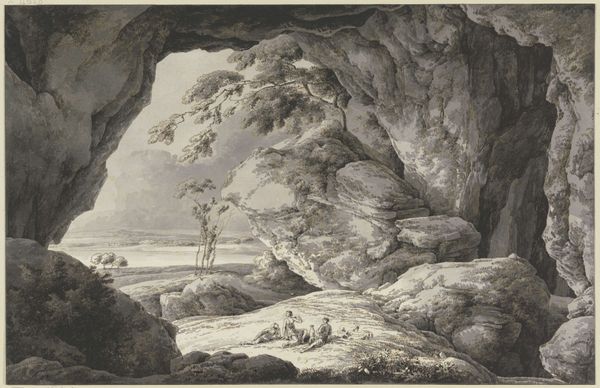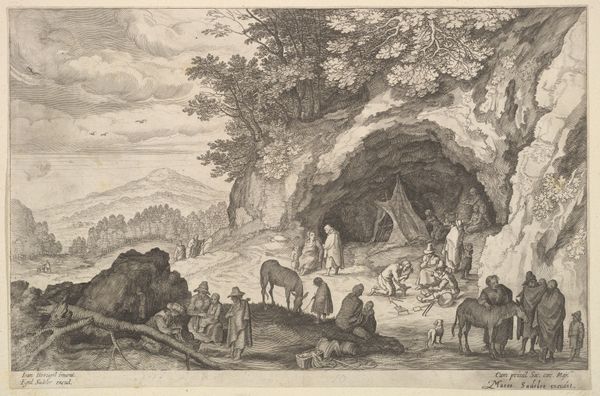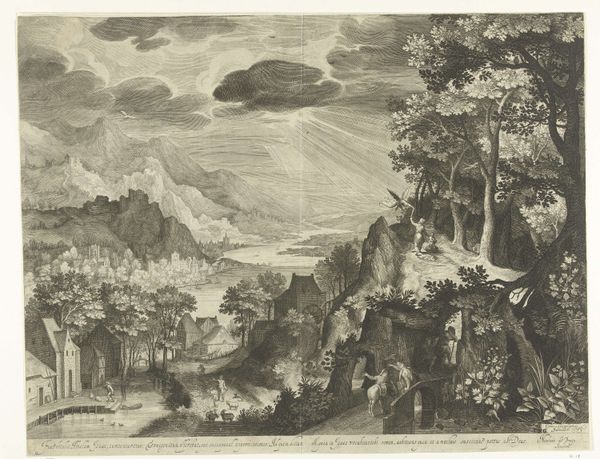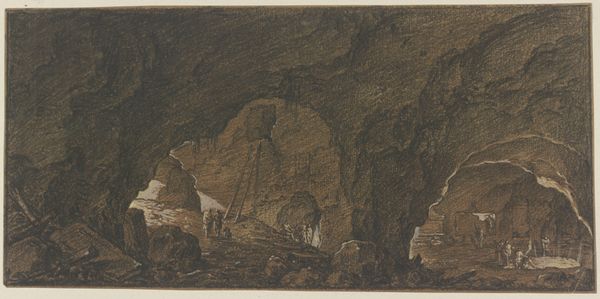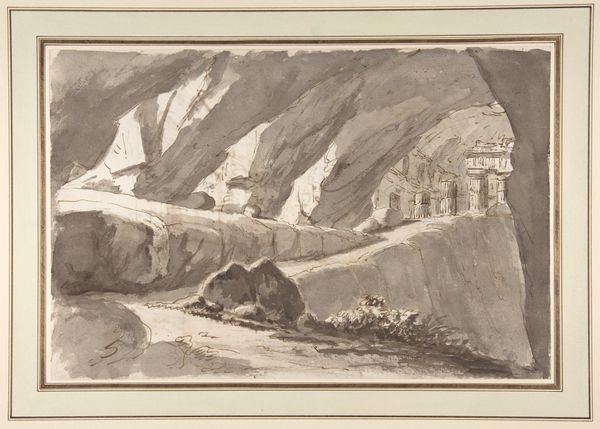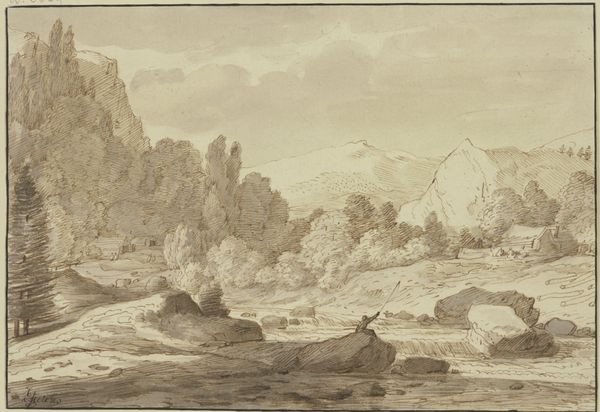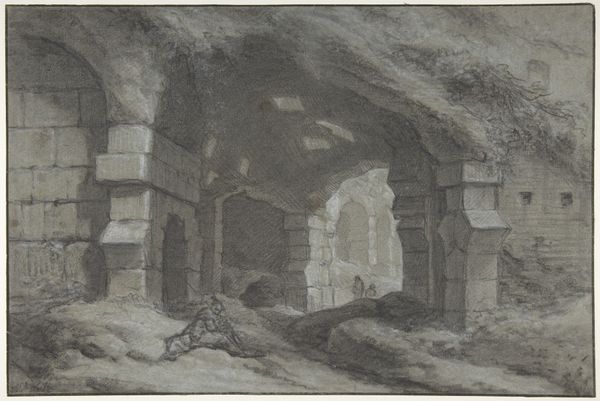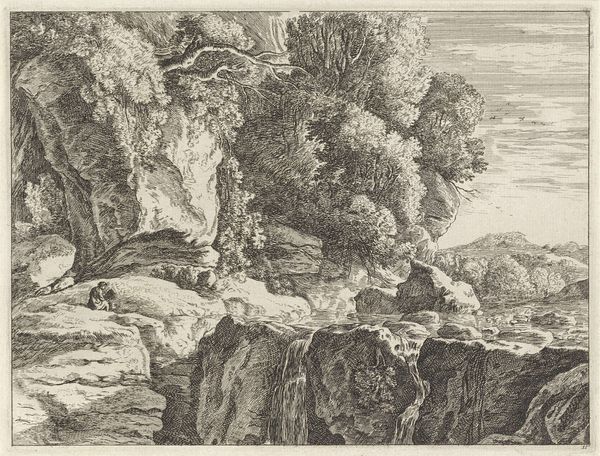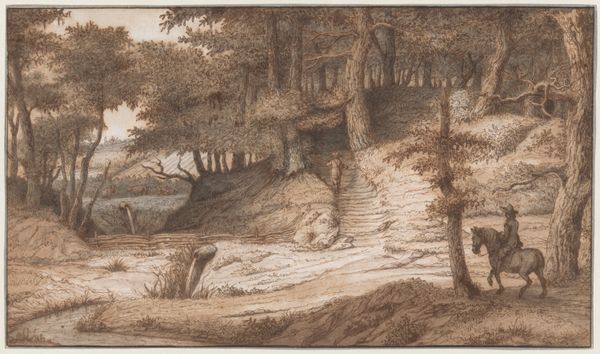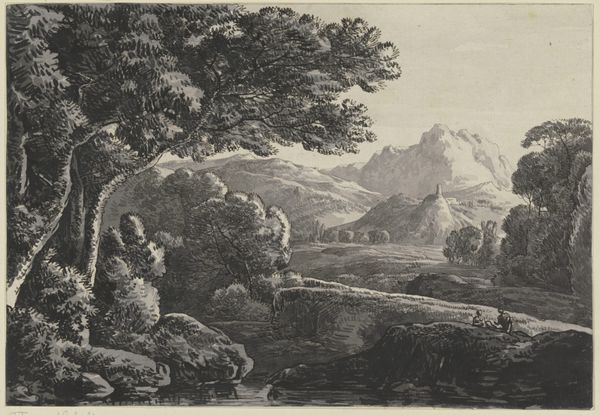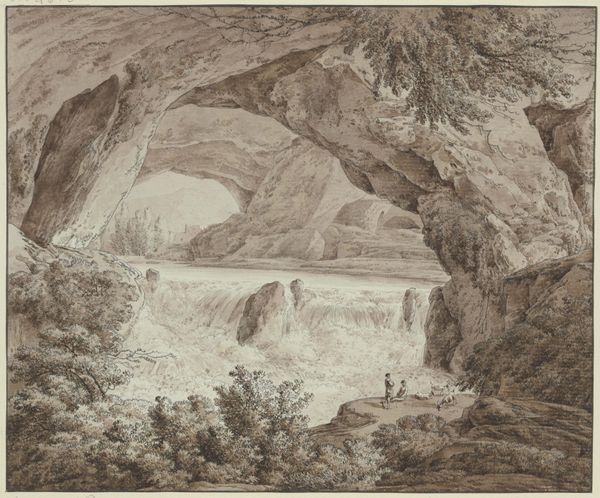
drawing, charcoal
#
drawing
#
landscape
#
charcoal drawing
#
romanticism
#
charcoal
#
history-painting
Dimensions: Sheet: 15 × 21 in. (38.1 × 53.3 cm)
Copyright: Public Domain
Curator: This is Simone Pomardi's "Cave of Pan, near Sunium, Greece," created around 1805. It's a charcoal drawing with washes, housed here at the Metropolitan Museum of Art. Editor: My first impression is one of hushed reverence. The monochromatic palette amplifies the sense of age and stillness, like stepping into a long-forgotten dream. Curator: Indeed. It embodies the Romantic era's fascination with the sublime, but also colonial extraction and travel. Let's consider Pomardi, who was, fundamentally, a white European artist depicting and thus owning a specific version of a historically important, spiritually resonant place in Greece. The question arises: Who is the 'Pan' that he is interested in representing? What are the social, political implications of evoking his figure in this way, at this moment? Editor: Pan, a complex figure… a pastoral deity, linked to fertility, music, and wild places. This charcoal rendering offers an immediate visceral response. The mouth of the cave feels like an entrance to another realm. What of the cultural associations that this would have immediately triggered? The artist's mark-making – especially in those dense charcoal stalactites – mimics the textures and tactile presence of this site, rendering the place as primordial. It taps into our innate awe of nature. The way figures are incorporated at such a small scale speaks to human temporality. Curator: The choice of charcoal underscores these issues, particularly its connection to mark-making, ownership, and landscape, both visually and discursively. This artwork reveals that there is no purely objective art, no nature devoid of politics or history. Even something as apparently natural and romantic as the landscape can serve to justify broader power dynamics. Editor: Yes, but is it wrong to see that also here there are primal symbols and images that persist across cultures? A dark portal... a place of initiation... Perhaps art also helps us grapple with these more basic questions about the relationship between nature and spirit, regardless of historical contingency? Curator: It's about layers, really. The cultural memory inscribed in the image through symbol and iconography *is* deeply tied to those very historical power structures. It invites us to consider how artists negotiate visual tradition and, simultaneously, participate in contemporary cultural narratives. Editor: A truly fascinating piece to engage with. The dance between primal symbol and political framing creates tension... and understanding.
Comments
No comments
Be the first to comment and join the conversation on the ultimate creative platform.
